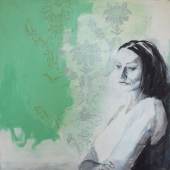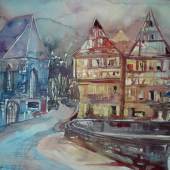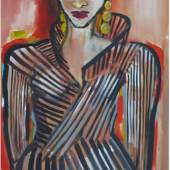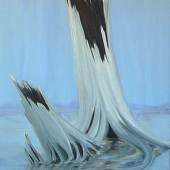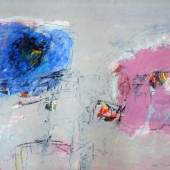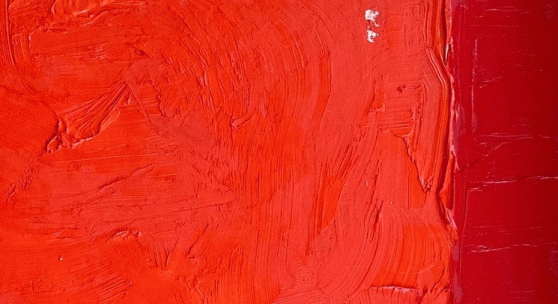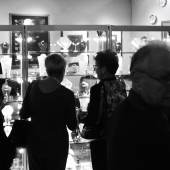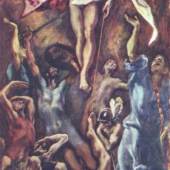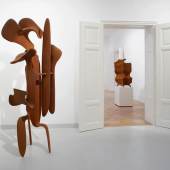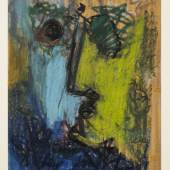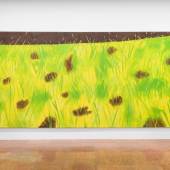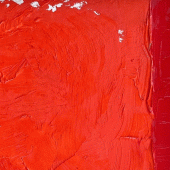A FOCUS ON PAINTING
-
Ausstellung12.09.2020 - 21.10.2020
Barrington’s new paintings reflect on the intricate relationship between painting and digital: painters have explored the ‘flat’ surface for thousands of years and, as such, have the potential to significantly influence future developments in the digital realm, accessed through the flat surface of a screen. The works trace a particular mode of working through the practices of Barrington’s predecessors – namely, Brice Marden (b. 1938) and American Minimalism – obliquely referenced by the date ranges that give his works their titles. In one piece, consisting of a number of Date Paintings in green tones, Barrington works directly with the gallery architecture to consider painting’s ability to react to and interrupt the tempo of a space and, in doing so, to influence visitors’ experience of a building and their movement through it. Installed throughout the corridor of Ely House, the monochrome paintings interrogate the kinaesthetic qualities of colour, size and placement, as well as relationships between vision, sound and movement.
It's about using colour and size as a push / pull ... You get used to seeing the same thing and then all of a sudden, a different tempo hits. – Alvaro Barrington
MANDY EL-SAYEGH
London-based Mandy El-Sayegh (b. 1985, Selangor, Malaysia) had her first institutional solo show, the specially commissioned installation Cite Y our Sources, at London’s Chisenhale Gallery last year. She was shortlisted for the biannual Max Mara Art Prize for Women in collaboration with the Whitechapel Gallery, London in 2017.
The artist presents an immersive installation featuring monumental paintings and assemblage, transforming the gallery's interior through direct interventions to the walls and floor. El-Sayegh’s practice explores the constant flux of meaning, constructed through the production and circulation of images and texts, and their subjective interpretation, with a focus on language and the body.
I’m interested in the erasure of meaning, or the accumulation of meaning through a layering system. – Mandy El-Sayegh
Combining found fragments with imagery and text, including advertisements, pages from the Financial Times, anatomical illustrations, collected sketches, hand-painted gestures and Arabic calligraphy borrowed from her father, El-Sayegh creates fleshy, visceral works that reconfigure seemingly abstract elements into a unified whole. Permeated by associative logic, these explorations of material and language take form in anthological collections of imagery and text, large-scale wall works, and all-encompassing, site specific installations.
Plastering newspapers across the gallery floor, El-Sayegh intervenes directly with the architecture of the space with the site-specific installation, gravity as fiction (2020). Bound between layers of latex, her interventions suggest medical associations and, in turn, point to the skin as an encasing structure for the multifarious thoughts, feelings and pieces of information that are absorbed and internalised daily. Upending the traditional notion of a frame, the latex alludes to the human need to make sense of the experiences and information to which we are repeatedly exposed, or which we have internalised through inheritance and transference. This notion of corporeality forms a crucial structuring principle in the artist’s work: she refers to her collage process as ‘suturing’ – the surgical act of stitching a wound – and to her painted surfaces as ‘skins’. In this installation, the understanding of a definitive truth is decentralised, while the viewers’ immersion in the totalising display reflects the human position as innately bound within multiple systems of structures and signs.
In her Net-grid paintings, El-Sayegh overlays silkscreen prints combining personal memorabilia, found objects and linguistic elements with hand-painted grids to consider the proliferation of materials and information, as well as the structures that contain them. The painted grids function to simultaneously contain and obscure information. They suggest the cultural and linguistic dislocation experienced in an unfamiliar context or system, whereby fragments of information with no immediate associations are transformed through the illusion of unity.

Throughout the installation, El-Sayegh’s sutured ‘skins’ are informed by what she refers to as ‘the scrolling way of seeing’: the passive engagement with social media feeds and the undifferentiated flow of information across our screens. The artist highlights the processes through which meanings become internalised and fragmented. Removed from their original contexts, the texts are reduced to a series of free-floating signifiers with no inherent meaning, taking on new narrative functions beyond their primary intent and drawing attention to the linguistic, cultural or political systems that usually inform their interpretation. By adopting recognisable signifiers and motifs – such as the familiar broadsheet or the fundamentals of text – El-Sayegh interrogates the perceived objectivity of language and the media by severing them from their habitual contexts. Probing the power of cultural and linguistic dislocation, the artist’s display becomes a site of metonymic regeneration – the transformation or biological renewal of ‘metonymy’ – the substitution of associated terms or concepts for one another. It becomes a mode of grafting wounds.
I treat the text script or the citation as a skin, literally and figuratively ... If you don’t have language, you feel it through the body. And then there’s often a form of shrugging off, which always hurts a bit, like the lobster [shedding its shell]. – Mandy El-Sayegh
-
05.10.2019 - 13.10.2019Am 5. Oktober rollt die FAIR FOR ART Vienna der Kunst zum dritten Mal den roten Teppich aus. Mehr...
-
In solch einer Ikonenwerkstatt dürfte auch El Greco Schüler gewesen sein, denn...
-
21.03.2024 - 11.05.2024Die Ausstellung präsentiert neue Arbeiten von Tony Cragg. Die Skulpturen des britischen...
-
21.03.2024 - 11.05.2024Die Ausstellung präsentiert eine Serie von Zeichnungen und Keramikarbeiten des israelischen...
-
17.04.2024 - 29.09.2024The Fondazione Giorgio Cini presents Claire, Grass and Water, an exhibition of new works by...
-
17.04.2024 - 29.09.2024The Fondazione Giorgio Cini presents an exhibition of new works by Austrian artist Martha...
-
12.09.2020 - 21.10.2020
.

